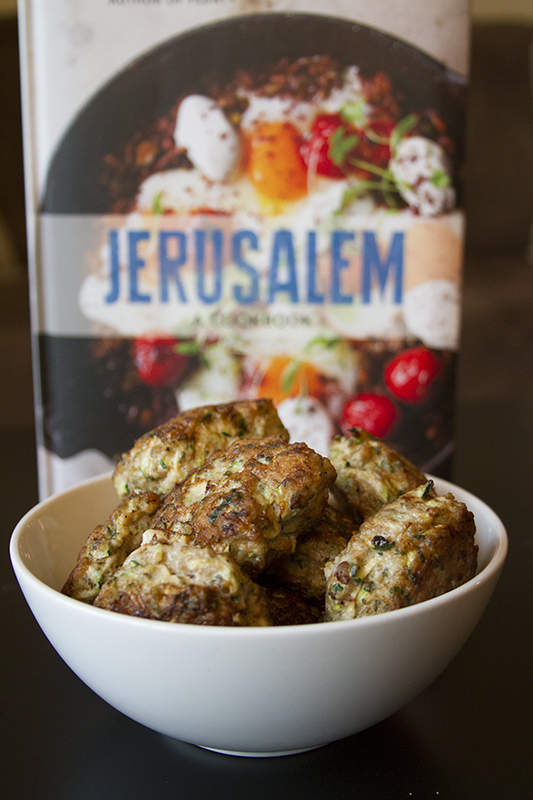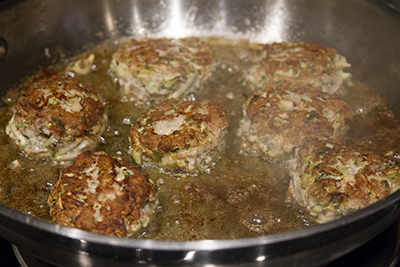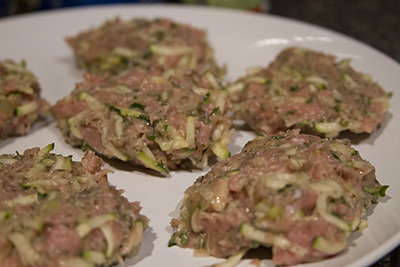There are a few things that make me really uncomfortable. I don’t like when my arms are restrained, I cower when I see two people fighting, and I cringe when people make my food restrictions the center of their attention. The uncomfortable “Oh I’m so sorry” and the bashful “well we can eat somewhere else” that my friends invariably sigh when discovering a chosen meal or restaurant is not conducive to my food restrictions provokes that special kind of social anxiety a killjoy might feel when asking to leave a party early. While I understand that these efforts are made out of compassion (and I’m grateful for the sentiment), I think there is a better way for our glutenated friends to be considerate and support us in our food struggles.
I’m writing this guide to help non-food restricted friends handle the eating needs of their gluten-free companions. This post was inspired by the book How to be a Friend to a Friend Who’s Sick by Letty Pogrebin, in which this storied journalist recounts her experiences with breast cancer and the shortcomings and triumphs of those who tried to support her. She dedicates an entire chapter to the bizarre things people say when learning of your ailment, which sharply reminds me of the many times when, upon learning of my new gluten-restrictions, my friends would say some variation of “That sucks. I love bread.” If you were wondering, reminding me of the crumbly, aromatic wonder that is wheat-based bread is not particularly helpful. So here are some tips on how to react to your friends’ and colleagues’ food restrictions. Hopefully, they can provide some insight on our thoughts and fears when it comes to food.
Tip 1: Don’t Make Us the Center of Attention. Think about it: If your friend is newly diagnosed with food allergies or gluten-intolerance (or both), they’ve probably gone through the following experiences recently: First, your friend has experienced the onset of extremely uncomfortable, painful, persistent, and unexplained symptoms. After being tossed from doctor to doctor, your friend has somehow managed to figure out that gluten is a likely culprit. She has then engaged in a radical lifestyle change, in which she has eliminated nearly every food that she’d been accustomed to eating (Pasta, sandwiches, burgers, fried things, cookies, muffins, pancakes…and so on). It’s likely that she’s gone even further than that (as I did), dropping down to an extremely restricted diet to facilitate the healing process. She’ll have become an involuntary recluse due to her ongoing health woes. And when she finally emerges from her solitary apartment, 10lbs lighter but free of symptoms, she’ll want to get back to normal. So if she was the type of person who wouldn’t give you a dining preference unless you twisted her arm before, she certainly will not feel comfortable with being responsible to dictate to her social group which restaurants are safe for her to eat and which will provoke the symptoms that she’s so recently escaped.
My advice is to respect your friend’s approach to the lifestyle. If he/she is comfortable insisting upon which eateries and social events best suit his/her needs, then that’s great. This person has acclimated well and will probably be just fine. If your friend is more self-effacing and inclined to grin-and-bear it when caught in a social setting that’s not conducive to her lifestyle restrictions, don’t insist upon obsequiously apologizing for the situation. We recognize that we would never have thought to accommodate food allergies before getting sick, and we don’t expect anyone else to! When this lifestyle change happens, we learn to manage being hungry, and we learn to always have emergency provisions at hand. So don’t worry, we’ll be just fine. Making a big fuss about it generally just makes us uncomfortable.
Tip 2: Recognize that Dining Out for Gluten-Free Poses a Significant Health Risk. Another important thing to realize is that eating food that we haven’t cooked with our own hands is anxiety producing. Generally, gluten-free eaters slowly accumulate a small list of trusted restaurants over time, only choosing to risk gluten exposure on weekends or days when they can afford to be sick in a worst case scenario. Unless dining at one of our trusted location (and even sometimes when we ARE at one of those sites), we’re fearful and distrustful of the kitchen staff. This might not be fair to the staff, but (frankly) they’re not the ones who pay for their mistakes!
Recognizing this should help you understand a few things about your gluten-free friends. If you’re frustrated that they keep turning down your invitations for social events, this is likely the reason why. Celiacs and other Gluten-Intolerant people frequently become voluntary recluses at first. They fear placing their peers in uncomfortable situations with their inability to eat, and simply choose to forgo social settings in which awkward food-related situations might arise. Think about it…what percentage of social gatherings involve food or drink?
It might be kind of you to let them know that you completely understand their fears and anxieties, and that you would be happy to research restaurants that are conducive to their restrictions. Alternatively, if you find yourself out with a gluten-free friend who simply chooses to eat or drink nothing, don’t feel awkward or guilty for putting him in the situation to watch other people eat. They’re not thinking anything negative towards you or anyone in the group, they simply aren’t comfortable risking it. Perhaps they have an exam or important meeting the next day?
Tip 3: If you want to go above and beyond, educate yourself on what eateries are safe for gluten-free eaters. There are a few valuable resources that gluten-intolerant people and their family use to find social venues that facilitate celiac-safe eating. I’m sure your gluten-free friends would appreciate you efforts to learn a few of these places so they don’t feel obligated to consistently offer restaurant recommendations. Here are a few resources:
The Gluten Intolerant Group Restaurant Awareness Guide: The Gluten Intolerant Group offers a certification for restaurants who go above and beyond to provide safe eating options for gluten-free patrons. Just type your town’s name into the search bar, and all certified restaurants in your area should pop up. Common ones include Outback Steak House and Bonefish Grill (Outback is a particular staple of mine!).
About.com Gluten-Free Reader’s Choice: About.com’s celiac site is full of helpful resources and articles for those who are learning about the gluten-free lifestyle. This is a list of restaurants voted upon by readers who’ve had good experiences at variety of chain locations. Chipotle, Outback, and P.F. Changs are a few that make the cut.
About.com Gluten-Free Registry: This is a user-managed restaurant registry. Users can enter any restaurant that maintains a gluten-free menu. Locations are often rated by those who’ve had good experiences there. This is probably the best resource for amassing a long list of potentially safe places to list, although the ratings and practices of each eaterie are not verifiable.
Tip 4: If you insist on throwing dinner parties or baking birthday cakes for gluten-free friends, you must educate yourself on cross contamination. We have good reason to be so afraid of eating: gluten is everywhere. The protein is naturally found in wheat, rye, and barely, but it sticks relentlessly to surfaces that can easily cross-contaminate your attempts to cook gluten-free. Here are must-know facts about cooking for your friend.
I. Wheat, Barely, and Rye contain gluten. You must not include any of these ingredients in anything you cook for gluten-free friends.
II. Gluten is sticky (like Glue-ten!). It sticks to the inside of toasters, cooking surfaces, sponges, wooden cutting boards and utensils. All of these things must be replaced (and cooking surfaces cleaned well) if you decided to cook or bake for your gluten-free friends. Non-stick Cookware and Bakeware pose a particular challenge if the non-stick coating is scratched, for gluten can seep into the cracks and the pan becomes impossible to clean well enough to ensure absolute safety. To cook or bake for your gluten-free friends, you will either need stainless steel or ceramic cookware (which can be effectively cleaned), or you will need to purchase separate and dedicated non-stick gluten-free cook/bakeware.
III. You need to be aware of your friend’s multiple food allergies. We often come with a veritable collection of food restrictions! (mine are potatoes, corn, gluten, and vinegar so far).
IV. You should probably use a gluten-free baking mix for cakes, breaks, cookies, or anything else. Gluten-free baking is its own quirky science, and you will easily be daunted by the prospects of making something from scratch. Use mixes like Namaste Mixes or Chebe Mixes (found online, at Whole Foods, and at Fresh Market) to eliminate the hassle and ensure a good product.
V. When cooking meals, stick to whole foods. Many food additives are hard to identify as unsafe (Maltose, Maltodextrose, Dextrin, etc), so you’re safest sticking to the meat, fish, poultry, and produce sections of your grocery store when accommodating a gluten-free friend.
I hope this guide helps you to understand the perspective of your gluten-free friends. I’m sure they very much appreciate you reading it! Always remember that, above anything, we’re just afraid of getting sick. If we rudely decline your invitations or your thoughtful baked goods, it’s really not that we don’t appreciate your gestures. It’s because we’re afraid of them 😉 On behalf of your friends, thanks so much for reading!







 .
. 